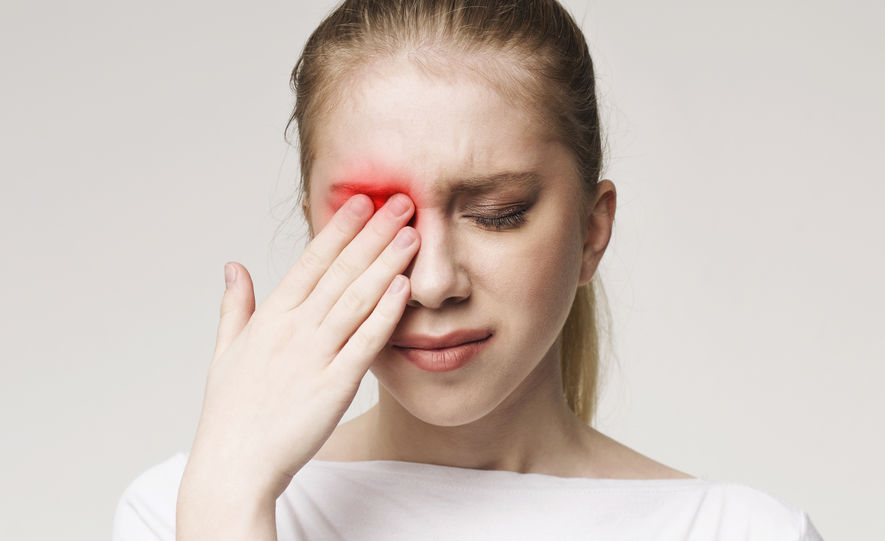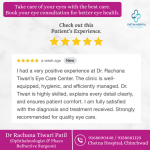Our eyes are one of the most delicate and vital organs of the human body. They allow us to perceive the world, colors, emotions, and faces — making vision an irreplaceable gift. Yet, most people take their eye health for granted until something goes wrong.
One of the most common yet underestimated problems is an eye injury or foreign object in the eye. Whether it’s a speck of dust, a flying metal particle, or accidental chemical exposure, any foreign object can cause irritation, infection, or even permanent damage if not treated properly.
This blog explains why you should never delay medical attention after an eye injury, what to do immediately, and how early treatment can protect your vision.
Understanding Eye Injuries
Eye injuries occur when the eye or surrounding tissues are damaged due to external trauma, chemical exposure, or foreign objects entering the eye. The severity can range from mild irritation to serious internal damage affecting the cornea or retina.
Some injuries heal quickly, while others can lead to complications like corneal ulcers, infections, or permanent vision loss if not managed correctly. Therefore, prompt diagnosis and treatment by an eye specialist are crucial.
Common Causes of Eye Injuries
Eye injuries can happen in everyday life — at home, at work, or even during play. Some common causes include:
- Foreign Objects:
Tiny particles such as dust, sand, wood chips, or metal fragments can easily enter the eye, especially in windy or dusty environments. - Chemical Exposure:
Cleaning agents, bleach, or other industrial chemicals can cause serious burns or irritation when splashed into the eyes. - Physical Trauma:
Accidental pokes from fingers, nails, or toys are common among children. - Burns and Sparks:
Fireworks, hot oil, or UV exposure from welding can result in eye burns. - Sports-Related Injuries:
Fast-moving balls or equipment can hit the eye during sports, causing blunt trauma or internal bleeding. - Accidents at Work:
People working in construction, factories, or workshops are at higher risk of flying debris and chemical exposure without proper protective eyewear.
Types of Eye Injuries
Eye injuries are classified based on the part of the eye affected and the cause. Some of the major types include:
- Corneal Abrasions:
Scratches on the cornea caused by dust, nails, or rubbing the eye when a foreign particle is present. Symptoms include pain, redness, and sensitivity to light. - Foreign Bodies in the Eye:
Tiny objects such as dust, eyelashes, or metal shavings can get trapped under the eyelid or on the cornea. - Chemical Burns:
Caused by acid or alkali exposure, leading to redness, pain, and potential corneal damage. - Blunt Trauma:
Impact from a ball, fist, or object can cause bruising, bleeding, or retinal damage. - Penetrating Injuries:
Sharp objects can pierce the eyeball, causing severe internal injury — a true emergency. - Radiation Injuries:
Prolonged exposure to UV rays (from sunlight or welding) can cause photokeratitis, a painful condition similar to a sunburn on the cornea.
Symptoms That Require Immediate Medical Attention
Not all eye discomfort is harmless. If you experience any of the following symptoms after an injury or exposure, you should seek immediate medical attention:
- Persistent pain or burning sensation in the eye
- Redness, swelling, or blood in the white of the eye
- Excessive tearing or watery discharge
- Blurred or decreased vision
- Sensitivity to light (photophobia)
- Feeling of something stuck in the eye
- Difficulty opening the eye or keeping it open
Even if symptoms appear mild, they could indicate deeper damage such as a corneal abrasion or retinal injury.
First Aid for Eye Injuries: What to Do and What to Avoid
Knowing what to do immediately after an eye injury can make a big difference in recovery.
✅ Do’s:
- Rinse the eye gently: Use clean water or sterile saline solution to flush out dust or small particles.
- Blink several times: Sometimes, blinking can naturally remove minor debris.
- Use protective eyewear: If available, cover the injured eye with a clean cloth or cup to prevent further injury while seeking help.
- Visit an ophthalmologist immediately: Early evaluation prevents complications and infection.
❌ Don’ts:
- Do not rub your eyes: This can worsen scratches or embed particles deeper.
- Do not use home remedies: Avoid applying ointments, oils, or herbal treatments without a doctor’s advice.
- Do not try to remove large or embedded objects: Leave that to the eye specialist.
- Do not delay medical care: Even minor irritation can become serious within hours.
Diagnosis and Treatment by an Eye Specialist
At a hospital or eye clinic, an ophthalmologist will perform a detailed examination to identify the type and extent of the injury.
Common diagnostic procedures include:
- Slit-lamp examination: To magnify and inspect the cornea and conjunctiva.
- Fluorescein dye test: To highlight scratches or abrasions on the cornea.
- Visual acuity test: To assess the impact on vision.
- Imaging (if required): Ultrasound or X-ray may be used in serious cases.
Treatment Options
Depending on the cause and severity, treatment may include:
- Removal of foreign bodies under sterile conditions.
- Antibiotic or lubricating eye drops to prevent infection and promote healing.
- Pain relief medication or anti-inflammatory eye drops.
- Eye patching in cases of corneal injury to aid recovery.
- Surgical intervention if the injury is deep or penetrating.
Early treatment ensures faster healing and minimizes the risk of complications such as infection, scarring, or vision loss.
Complications of Untreated Eye Injuries
Ignoring eye injuries or attempting self-treatment can lead to serious problems, such as:
- Corneal ulcers or infections
- Scarring of the cornea
- Chronic eye pain or dryness
- Vision distortion or blindness
- Secondary infections like conjunctivitis
Remember, even small injuries can lead to big consequences if left untreated.
Prevention: Protecting Your Eyes from Injury
Prevention is always better than cure, especially when it comes to eye safety. Here are some simple yet effective precautions:
- Wear protective goggles when working in dusty areas, construction sites, or while using power tools.
- Use UV-protective sunglasses outdoors to prevent sun or UV damage.
- Handle chemicals carefully and store them away from children.
- Supervise children during play and keep sharp objects out of reach.
- Avoid rubbing your eyes with dirty hands.
- Stay safe during festivals – be cautious around fireworks and smoke.
- Get regular eye check-ups – early detection of any damage ensures timely treatment.
When to See a Doctor
You should immediately consult an eye specialist if you experience any of the following:
- Foreign object in the eye that doesn’t wash out
- Persistent redness, tearing, or pain
- Blurred or double vision
- Chemical splash or burn
- Swelling or bruising around the eye
- Blood inside the eye (hyphema)
Never assume that minor irritation will resolve on its own — sometimes, deeper layers of the eye may be affected even if symptoms appear mild.
Conclusion
Your eyes are irreplaceable. A small mistake or delay in seeking care after an injury can cause lifelong vision problems. The best way to protect your eyes is by acting quickly, avoiding home remedies, and consulting an ophthalmologist at the earliest sign of discomfort.













